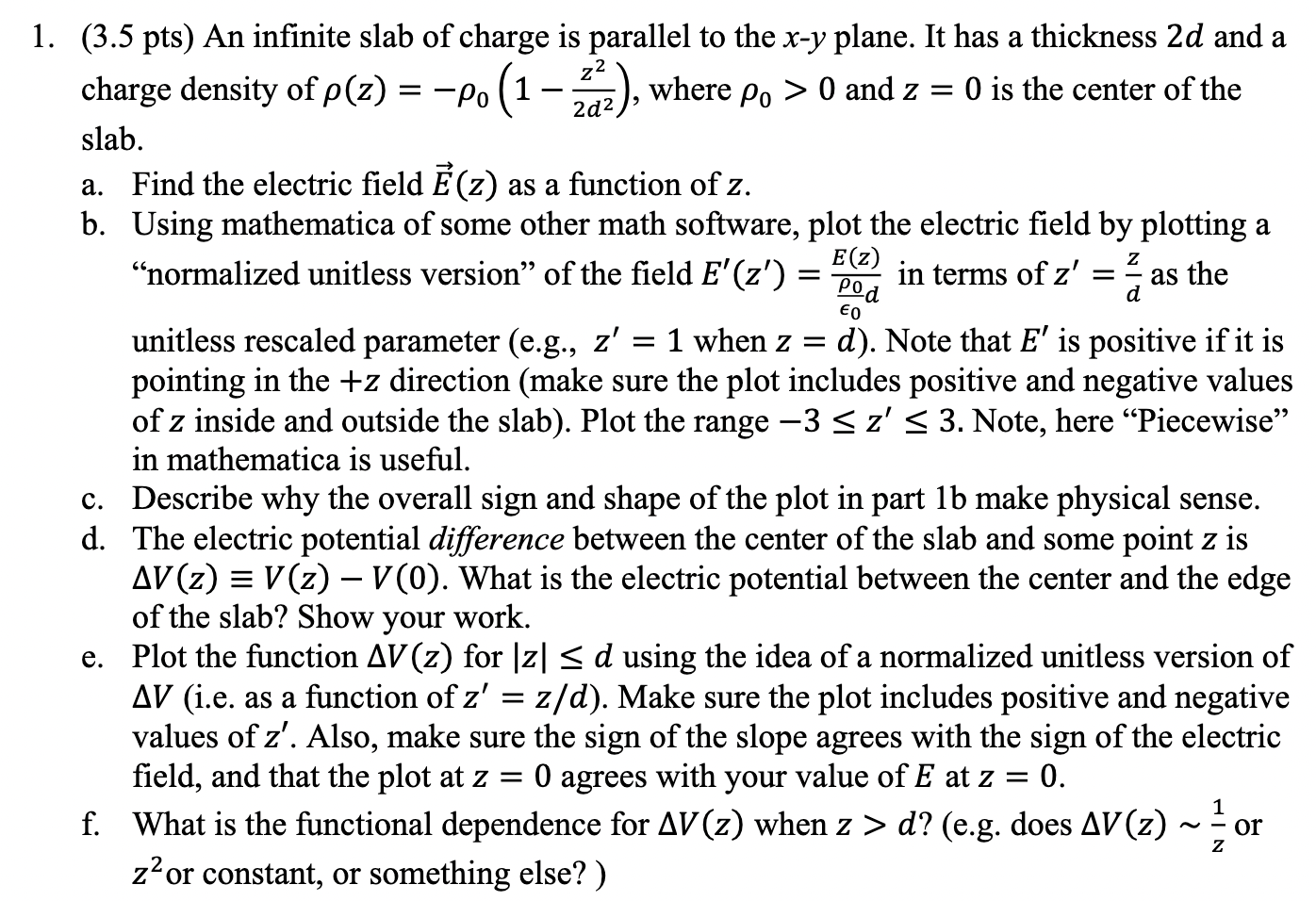Answered step by step
Verified Expert Solution
Question
1 Approved Answer
1. (3.5 pts) An infinite slab of charge is parallel to the x-y plane. It has a thickness 2d and a charge density of

1. (3.5 pts) An infinite slab of charge is parallel to the x-y plane. It has a thickness 2d and a charge density of p(z) = -Po (1 - 22), where po > 0 and z = 0 is the center of the slab. a. Find the electric field (z) as a function of z. b. Using mathematica of some other math software, plot the electric field by plotting a normalized unitless version of the field E' (z') : = E(z) in terms of z' = as the Pod d unitless rescaled parameter (e.g., z' = 1 when z = d). Note that E' is positive if it is pointing in the +z direction (make sure the plot includes positive and negative values of z inside and outside the slab). Plot the range -3 z' 3. Note, here Piecewise" in mathematica is useful. c. Describe why the overall sign and shape of the plot in part 1b make physical sense. d. The electric potential difference between the center of the slab and some point z is AV (z) = V(z) V(0). What is the electric potential between the center and the edge of the slab? Show your work. e. Plot the function AV (z) for |z| d using the idea of a normalized unitless version of V (i.e. as a function of z' = z/d). Make sure the plot includes positive and negative values of z'. Also, make sure the sign of the slope agrees with the sign of the electric field, and that the plot at z = 0 agrees with your value of E at z = 0. f. What is the functional dependence for AV (z) when z > d? (e.g. does AV (z) z or constant, or something else?) -~ or
Step by Step Solution
There are 3 Steps involved in it
Step: 1

Get Instant Access to Expert-Tailored Solutions
See step-by-step solutions with expert insights and AI powered tools for academic success
Step: 2

Step: 3

Ace Your Homework with AI
Get the answers you need in no time with our AI-driven, step-by-step assistance
Get Started


